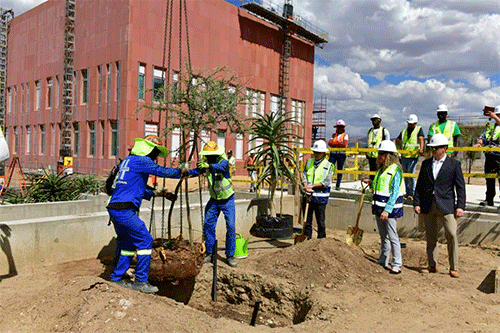The US embassy held a tree-planting ceremony at their new compound in Windhoek last week.
Government officials, members from the National Botanical Research Institute and other civil society organisations attended the event. Ambassador Jessica Long highlighted the milestone in their construction project, where they returned the vegetation to its environment.
“I am very excited to have the support of various entities. We listened to your concern over the removal of the natural fauna when we started construction a few years ago. We relocated as many trees as we could during that timeframe to protect Namibia’s natural beauty and conducted our operations in accordance with the permits,’’ said Long.
Planted in such a way to prevent erosion and to take advantage of the rainfall, the plants include Namibia’s Camel Thorn tree, one of the oldest tree species in Namibia. Approximately 5 000 plants are being reintroduced to the compound, almost 300 of which are trees representing 33 different species in Namibia.
The sprawling compound in Klein Windhoek employed over 2 000 Namibians in the construction phase, more than 100 of whom are women.
“We have ensured that the building is being constructed in accordance with green building standards and sustainable practices,’’ Long added. BL Harbert, the company responsible for the construction, has offered financial training to all its workers.
They have provided tours to engineering students from the Namibia University of Science and Technology (NUST) to learn about their practices and over 350 000 meals to school children were also donated.
The US government does not just talk the talk when it comes to corporate social responsibilities, they also walk the walk with approximately US$17 million (approximately N$310 million) into the Namibian economy with the construction of the new compound.
“Let the planting of these trees be a symbol of our partnership with Namibia, deeply rooted, endured, and fruitful,’’ said Long.


